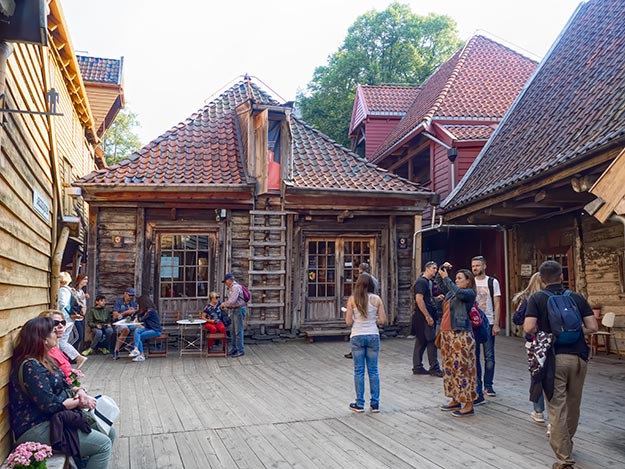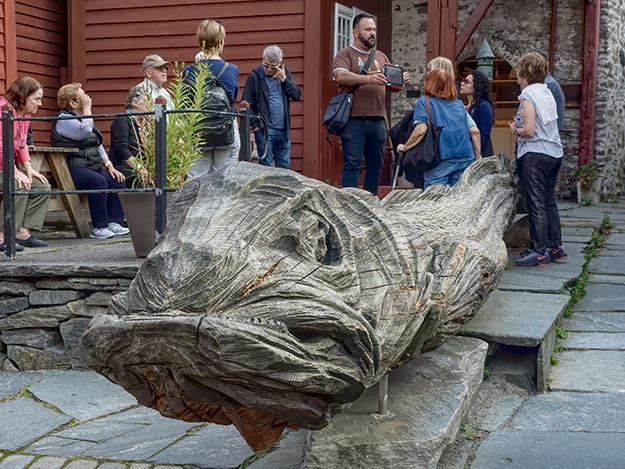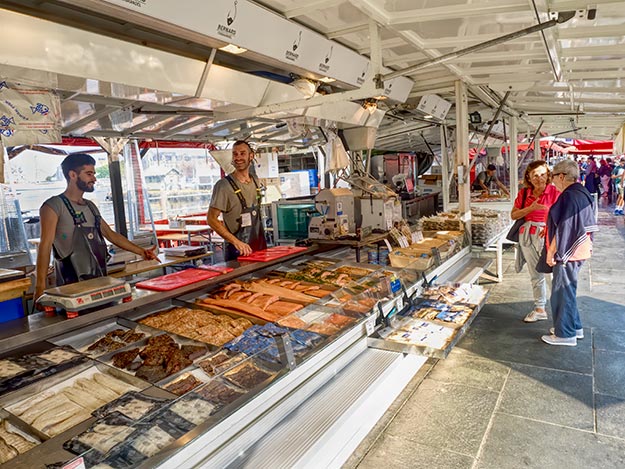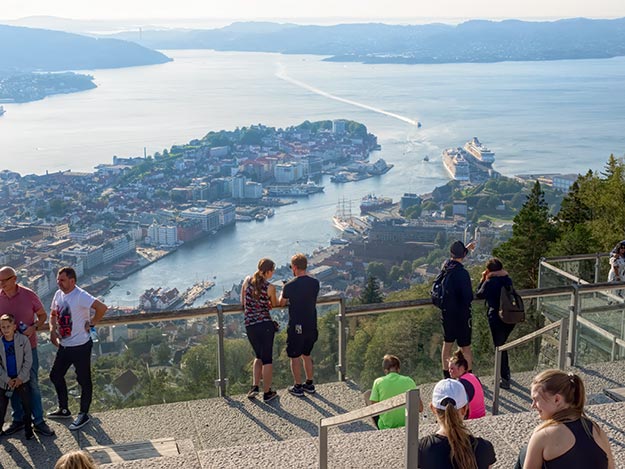A salty sea-scent hung in the air as I strolled around the historic Hanseatic Wharf in Bergen. In earlier centuries, the fragrance would have been a bit more, well…ripe, to be kind. I tried to imagine how it must have smelled in centuries past, when the fishing fleet delivered thousands of tons of codfish to the pier every year. First, the livers of the cod were cut out, stuffed into giant vats, and set out under a blistering summer sun. The fish fermented in the heat, forcing the cod liver oil to rise to the top, where it could be skimmed off. The gutted fish were hung up on racks to dry or split and salted to make klipfish, while the roes were salted in enormous oak wine vats. In later years, cod liver oil was extracted by boiling or steaming, but I doubt that would have improved the smell around the wharf. In a word, it must have reeked.

Bergen was founded in 1070 by King Olaf III Haraldsson. From the beginning, it was an important trading center. Wood and furs were major exports, but it was codfish that had the most impact. Fish was in demand in Europe, as Catholics could not eat meat on Friday. The federation of north German towns and cities known as the Hanseatic League took notice. Formed in the 12th century, the league established trade centers that stretched from Russia to Britain. For more than 400 years it monopolized trade around the Baltic Sea, especially in salt and fish. By the 14th century, the league had taken over the codfish trade and turned Bergen into one of the largest cities in northern Europe.

Hanseatic merchants built their living quarters in a cramped area around the wharves on the east shore of Vaagen Bay. This city within a city became known as Bryggen, the Norwegian word for dock or pier. The houses, shops, warehouses, and processing facilities in Bryggen were built from wood, an abundant commodity in Norway. The combination of narrow lanes and hodgepodge wooden structures was a disaster waiting to happen. Fires ravaged Bryggen on numerous occasions. Fortunately, the merchants repeatedly rebuilt, using traditional patterns and building methods that preserved the ancient wooden urban compound. Today, the 62 historic buildings that remain in Bryggen offer an intriguing glimpse of what it was like to live and work within these cramped and smelly confines.

I wondered whether any vestiges of the historic cod trade still existed in Bergen. Deep within the bowels of Bryggen I found a wooden sculpture of a truly ugly giant codfish. But it was across the bay where I discovered the modern day equivalent, a combination open-air and indoor fish market. Since the 1200’s, the market has facilitated trade between fishermen, farmers, and residents. It was originally located next to Bryggen, but was moved to the opposite side of the bay in 1556 to prevent the Hanseatics from gaining too much power in the city. Today it is one of the most popular gathering places in the city, for residents and tourists alike. As I perused stalls heaped with fresh seafood, one hawker offered me a raw oyster. At another, a heap of freshly boiled shrimp temped even this vegetarian.

But where was was the cod? With stomach growling from all the delicious odors, I headed for the market’s indoor restaurants. I didn’t find any veggie-friendly food, but I did find stringers of dried codfish hanging from the ceiling. I glanced left and right, making sure no one was watching, before reaching up to feel one of the desiccated monsters. The “meat” was rock hard. I later learned that dried cod can’t just be thrown in a pot. Before cooking, it must be re-hydrated and desalinated, a process that requires soaking in cold water for one to three days, with water changes two or three times a day. No wonder dried cod has a storage life of several years. It made me glad to be a vegetarian.

Author’s note: I was a guest of Collette during my Spectacular Scandinavia tour. However, the receipt and acceptance of complimentary items or services will never influence the content, topics, or posts in this blog. I write the truth, the whole truth, and nothing but the truth.

If you enjoyed this article about he historic Hanseatic Wharf in Bergen, you may also be interested to see my video about riding the Flam Railway through Norway’s spectacular, waterfall-strewn gorges and valleys.

My friends and I did this tour in 2018 and I fell in love with Norway! The scenery was amazing especially the fiords
I loved the sculptures in Oslo and enjoyed people watching at a sidewalk cafe
It just seemed whichever way one turned there were beautiful views
Would love to return but physical problems probably will prohibit that—or the virus will
If you get a chance, GO.!
I totally agree Diane. Norway is a stunningly beautiful country.
Very attractive images are used also here. Very wonderful post. Thanks for this.
Barbra, you defined and detailed a smell of cod I want to smell in person. Great blog post! ????????
Thank you so much Marty. Of course, these days there is no eau’d fish as in olden days, other than around the open-air fish market, but there is still loads of history to experience.
I visited Bergen about 50 years ago and can still remember the smell of fish. It was quite foggy which made my nose more sensitive.
Hi Anne: Thankfully, the smell of fish only lingers around the outdoor fish market these days, and I’m sure it’s nothing like the days when they were still producing cod liver oil. But it sure makes for a fascinating history.
Hello Barbara,
it’s been a while I have been reading your blog and was delighted to find you writing about a wonderful city in the country I have spent 25 yrs. in. Have been living in the town of Molde (farther up the coast from Bergen) and later in Lillehammer. Both beautiful places just as Bergen is, Thanks again.
You are very welcome Peter. I think Norway is one of the most beautiful countries in the world and I’m so delighted that you enjoyed my story.